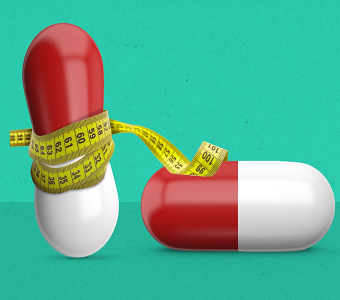Gossamer (GOSS) released their open label extension (OLE) data this morning. The data release was also accompanied by a $212M private placement. The data, albeit early and a small sample size, was better than expected. The financing was ugly but expected.
GOSS’ Phase 2 study (called TORREY) was a 24-week study (6-months). After the 24-weeks, patients moved into the OLE, which looks at patients out to 72 weeks (18-months). Seralutinib arm patients continued on seralutinib. Placebo patients cross-over onto seralutinib. Read details and expectations here.
Expectations and What Was Reported
Expectation: Report on 25 patients in total, each arm with 12 patients
The reported data included 30 patients in total, of which 16 continued seralutinib and 14 were placebo-crossover.
Expectation: Continued seralutinib patients report at least a stable PVR & 6MWD out to Week 72.
The majority of the 16 patients that stayed in the seralutinib arm demonstrated deepening PVR responses. 11/16 patients had improvements during the Phase 2 study. In the OLE, 9/11 continued to improve out to week 72, with a mean improvement of 39%.

The deepening PVR improvement is a differentiating factor for seralutinib vs Merck/Acceleron’s sotatercept. In their own Phase 2 OLE, Merck/Acceleron’s sotatercept plateaued and did not provide further continued benefit out to 24-months. This is where GOSS has shown early signs of differentiation - the longer a patient stays on a drug, the greater their improvement.
GOSS’ OLE patients were also seeing further improvements in the 6MWD and NT-proBNP. These improvements were even more pronounced in the Phase 3 target population.

It’s important to remember that the n=16 in GOSS’ continued seralutinib OLE group had a median PVR of 541. To compare, GOSS’ Phase 2 trial baseline PVR was 675.
Merck/Acceleron’s sotatercept Phase 2 PVR was 770.
Deepening PVR improvement out to 72 weeks in this "less sick" group is an early promising sign of durable disease modification. The effect should be magnified in the remaining sicker patients.
Expectation: Placebo-cross patients report PVR declines and directional 6MWD improvements out to 72 weeks.
Only directional PVR data was shared; that 11/14 patients had improved PVR. Placebo-cross patients saw a 15M increase at week 72, higher than the 0M the placebo patients saw at week 24.

Expectation: Clean AE profile
Safety & tolerability remain relatively benign, with no safety signals emerging or worsening with long-term use. Headaches, cough and Covid were the three most common side effects.
Bottom Line: GOSS’ data on the “less sick” portion of their Phase 2 trial demonstrated a deepening improvement over the long run. This is an early differentiating factor from Merck’s sotatercept in which patient improvement remained stable in the long run. Both can be seen as disease-modifying agents with a mechanism that could reverse remodeling rather than treating PAH by just vasodilating. Until recently, PAH was treated by vasodilators widening blood vessels to allow more blood to flow through and lowering your blood pressure. This treatment paradigm is now changing with the potential to reverse pulmonary arterial wall and right ventricular remodeling.
Merck paid $11.5B to acquire Acceleron, which showed it could maintain clinical efficacy through the extension period. Gossamer’s early data shared yesterday demonstrated that clinical efficacy was enhanced through the extension period.
Painful 137% Dilution, But Necessary
Gossamer sold 130M shares of common stock and 32.5M warrants at a price of $1.63 in tandem with the release of OLE data. This $212M financing gives GOSS sufficient cash to run Phase 3 trials for seralutinib and subsequent commercializing efforts. The company now has 370M in proforma Q2 cash, 225M shares outstanding and $215M in debt. It sports a sub-200M enterprise value.
Gossamer management did warn that they would need up to $200M to get through their soon-to-initiate Phase 3 with 350 patients. The actual $220M amount was higher than expected, but the added warrant is what the market did not express excitement over. Participants in the financing included a who’s who of biotech funds.
GOSS traded down 32% on the OLE data release and financing news. We think this reaction focused on the terms of the financing, but overlooked seralutinib’s potential as a PAH-modifying agent. The company will host a conference call to discuss OLE data and Phase 3 design on Tuesday July 25th at 10am ET. Expect more details to be shared on this call, as well as potentially additional data.
PropThink contributors hold no positions in any of the names mentioned
Access This Content Now
Sign Up Now!




